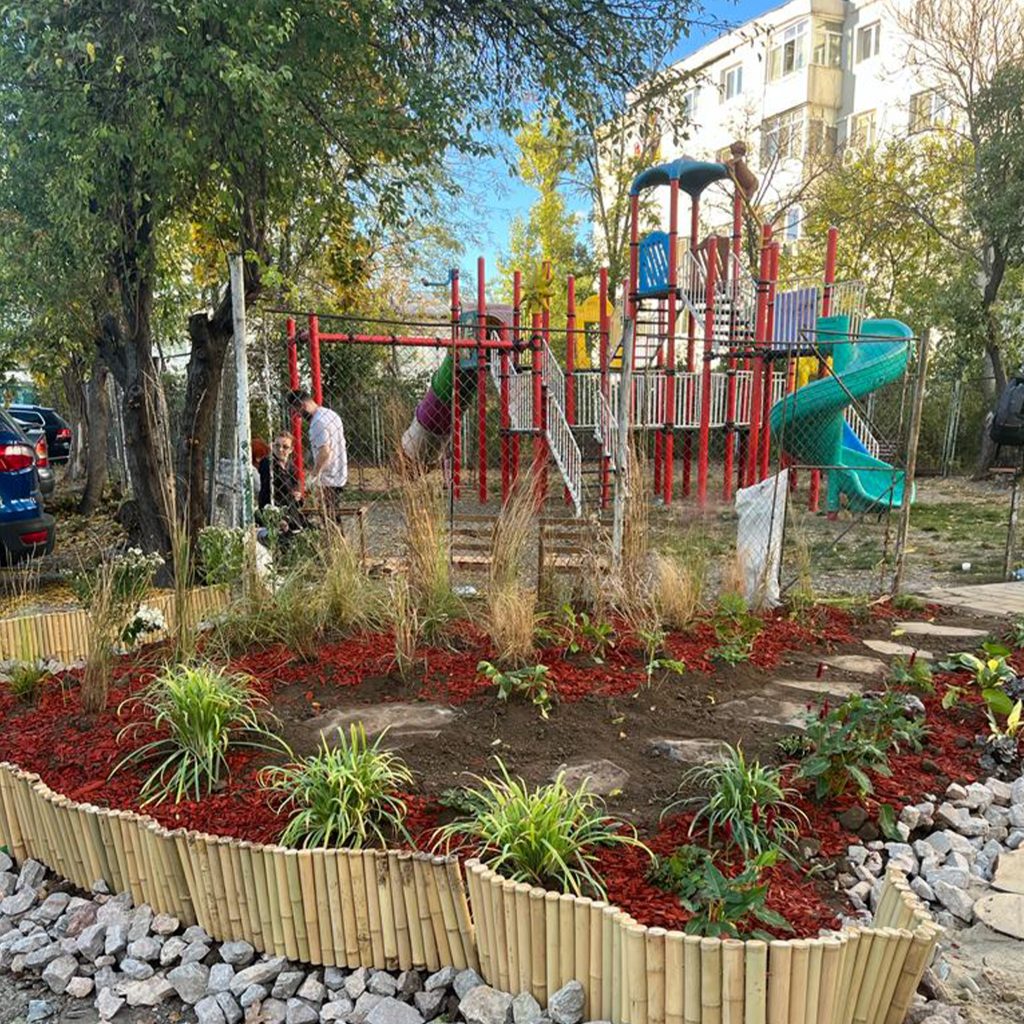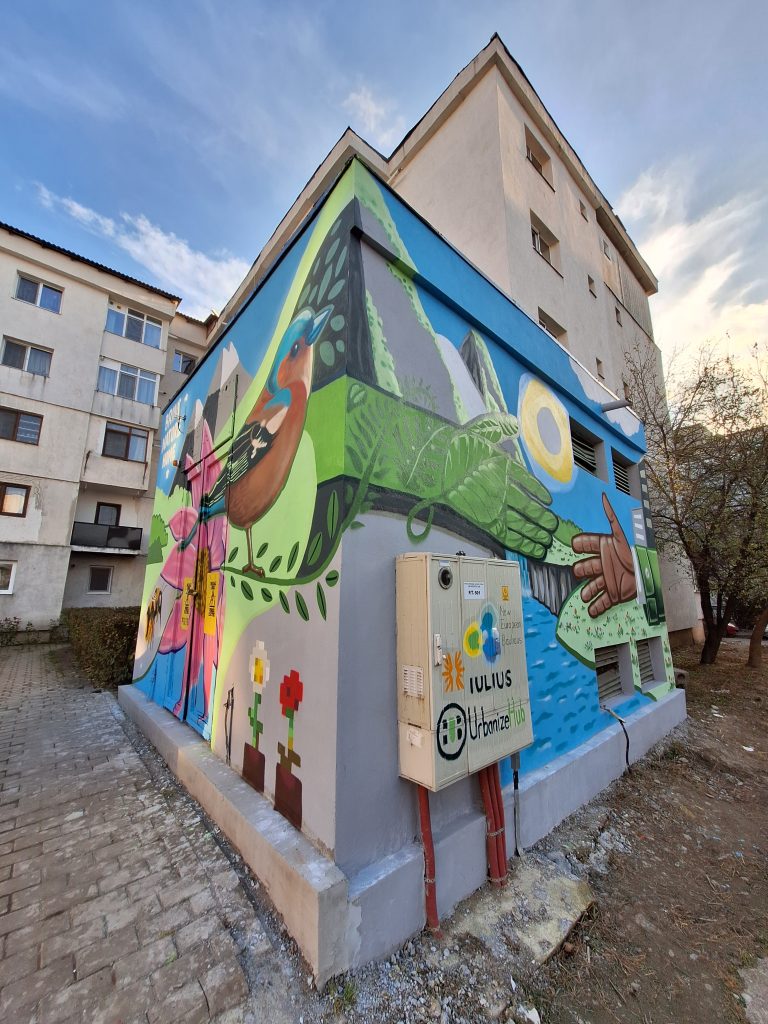
The “Bring Nature Home” project is a concrete manifestation of New European Bauhaus (NEB) values and principles, addressing innovative ways of urban regeneration through community involvement and the adoption of biophilic design.
The project proposes an alternative to mainstream urban regeneration practices, forging re-connecting people with nature. By bringing in people of all ages (kids, teenagers, adults and pensioners) to identify problems and propose solutions the project will offer the opportunity to create a strong community and facilitate knowledge exchange between generations.
The space is located on Bistrița Street No 8, Alexandru cel Bun neighborhood, in the city of Iași, Romania. A specific area of intervention was deliberately not chosen as in order to achieve our aim – to make everything participatory and to create a community – we had to let the participants choose a specific area. Thus, we considered two areas: the study area, i.e. the macro area where all the project activities took place, which measured about 400 sqm and was represented by the space behind blocks A1-A8 and the micro area, the actual space set up in the Bring Nature Home project, which measured about 40 sqm, i.e. about 10% of the macro area.



